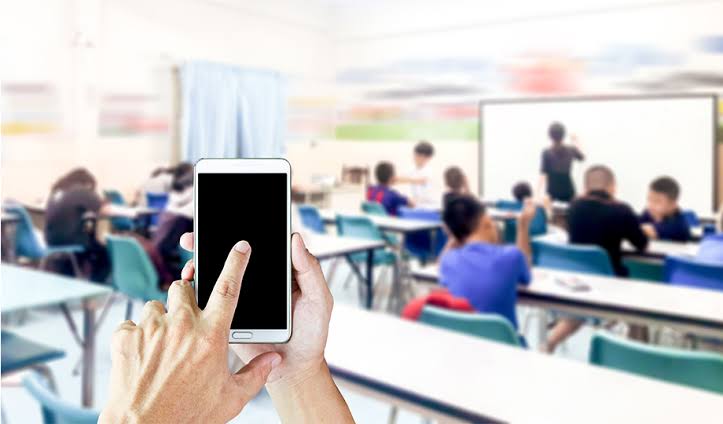Explore how smartphones are revolutionizing education by enhancing access to resources, facilitating interactive and collaborative learning, and supporting personalized education. Discover the benefits, challenges, and future potential of integrating smartphones into the learning process.
In recent years smartphones have transformed from mere communication tools into powerful devices that support various aspects of daily life including education and learning. As technology continues to evolve, smartphones have become integral to educational environments. They offer innovative solutions for both students and educators. This article explores how smartphones support education and learning. It will discuss their benefits challenges and future implications.
Enhancing Access to Educational Resources
One significant way smartphones support education is by enhancing access to educational resources. With internet connectivity and wide range of educational apps students can access wealth of information and learning materials anytime and anywhere. E-books, online courses educational videos are just few examples of resources available at students' fingertips. Easy access allows learners to explore subjects beyond school curriculum. They can engage with variety of content that supports their academic growth
Facilitating Interactive Learning
Smartphones have revolutionized way students interact with educational content. Interactive learning apps and games make learning more engaging and enjoyable. These applications often incorporate multimedia elements such as videos quizzes and interactive simulations that cater to different learning styles. For example language learning apps can provide instant feedback on pronunciation and grammar. Math apps can offer interactive problem-solving exercises. This interactive approach helps reinforce concepts. It improves retention by making learning a more dynamic experience.
Supporting Collaborative Learning
Collaboration is crucial component of modern education and smartphones play key role in facilitating this. Through various communication tools such as messaging apps and video calls students can work together on projects. They can complete assignments regardless of physical location. Tools like Google Docs or Microsoft OneDrive allow multiple users to edit and comment on documents in real-time. This promotes teamwork and peer learning. Additionally, social media platforms and educational forums provide spaces for students. They can discuss ideas share resources and seek help from peers and educators
Enabling Personalized Learning
Smartphones support personalized learning by allowing students to learn at their own pace and according to individual needs. Many educational apps offer adaptive learning features. These adjust difficulty of tasks based on student’s performance. This personalized approach helps address diverse learning needs. It ensures students receive appropriate level of challenge. For instance an app that tracks student’s progress in math can provide additional practice on topics where student is struggling. It can advance more quickly through areas where they excel.
Providing Tools for Organization and Productivity
Smartphones also aid in organization and productivity which are essential skills for successful learning. Calendar apps help students keep track of assignments. Reminder notifications and task management tools assist with deadlines and study schedules. Note-taking apps allow students to capture and organize information from lectures and readings efficiently. Many smartphones come equipped with voice assistants that can set reminders and answer questions. They can perform quick calculations as well. This further enhances students’ ability to manage academic responsibilities effectively
Bridging the Digital Divide
The integration of smartphones in education helps bridge digital divide by providing more affordable alternative to traditional educational technology. While not all students may have access to high-end computers or tablets many already own smartphones. By leveraging these devices, educational institutions can reach broader audience. They can offer digital learning opportunities to students who might otherwise be left behind. This accessibility can contribute to reducing educational inequalities. It ensures that all students have opportunity to benefit from digital resources.
Challenges and Considerations
Despite many advantages of smartphones in education there are several challenges and considerations to address. One primary concern is potential for distraction. With social media, games and other non-educational apps readily available students might find it challenging to stay focused on their studies. Educators and parents need to establish guidelines. They must encourage responsible use to mitigate these distractions.
Privacy and security are also significant concerns. As smartphones often store personal information and connect to various online services, ensuring protection of students' data is crucial. Educational apps and platforms must adhere to strict privacy standards. Users should be educated about safe online practices.
Furthermore while smartphones can enhance learning, they should not replace traditional educational methods entirely. A balanced approach that integrates technology with conventional teaching methods is essential. This is necessary to provide a comprehensive and effective educational experience.
The Future of Smartphones in Education
Looking ahead role of smartphones in education is likely to continue expanding. Emerging technologies such as augmented reality (AR) and virtual reality (VR) are already being integrated into educational apps. These technologies offer immersive learning experiences that can further enrich students' understanding of complex concepts. Advancements in artificial intelligence (AI) could lead to more personalized and adaptive learning tools. These tools cater to individual students' needs even more effectively.
In conclusion, smartphones play a significant role in supporting education and learning. They enhance access to resources and facilitate interactive and collaborative learning. Additionally they enable personalized experiences and improve organization and productivity. While there are challenges to address, benefits of integrating smartphones into educational practices are substantial. As technology continues to evolve smartphones will likely remain valuable tool in educational landscape. They help to shape future of learning.
